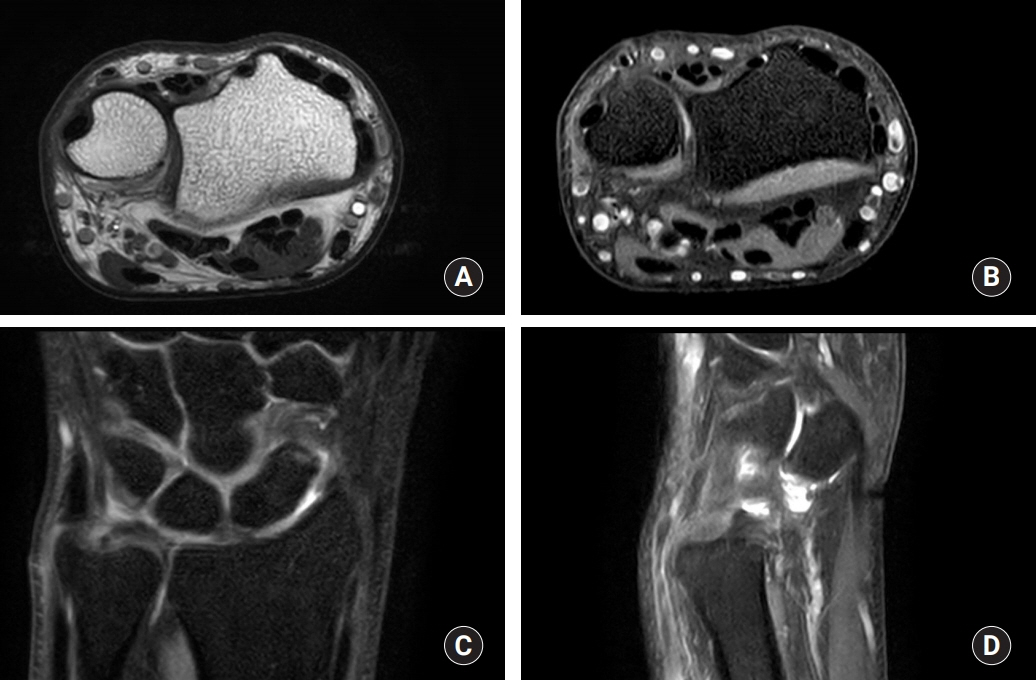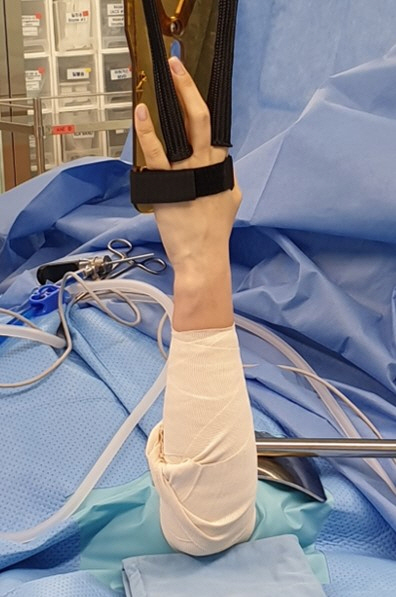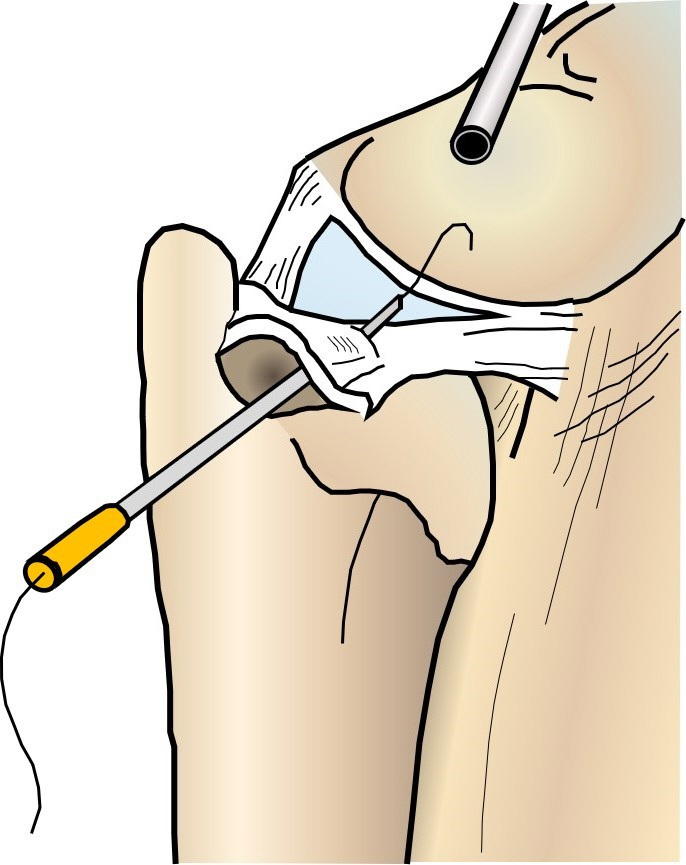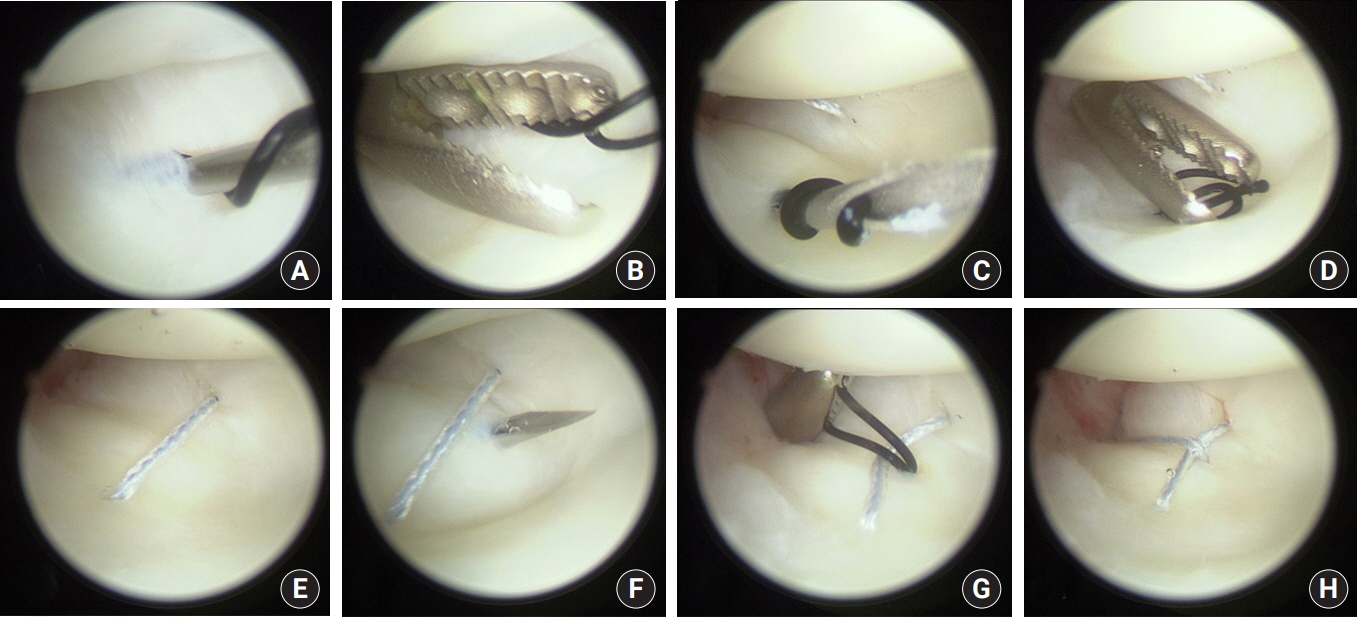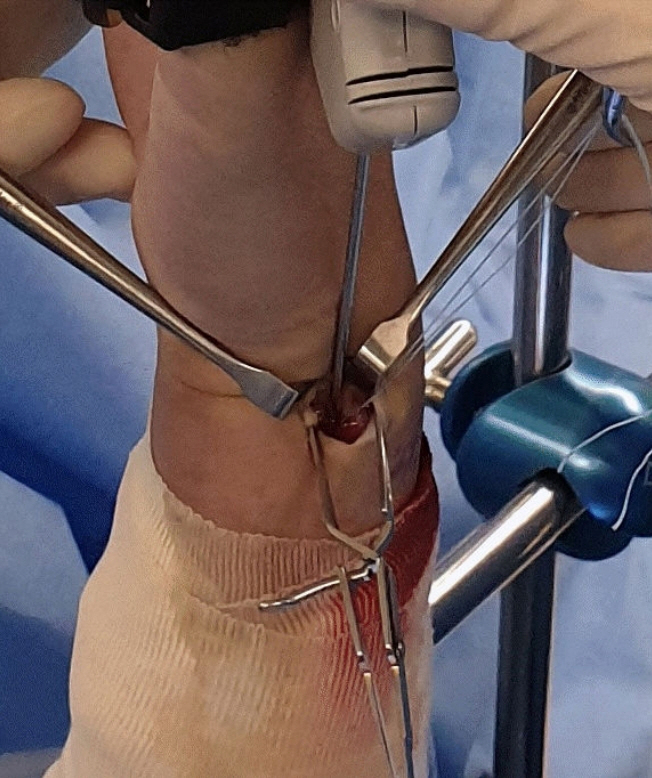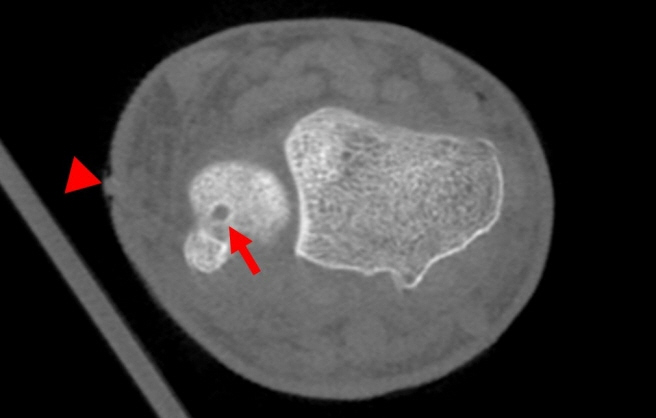Arch Hand Microsurg.
2020 Sep;25(3):167-174. 10.12790/ahm.20.0026.
Arthroscopic Repair of Triangular Fibrocartilage Complex Tear
- Affiliations
-
- 1Department of Orthopedic Surgery, The Catholic University of Korea, Eunpyeong St. Mary’s Hospital, Seoul, Korea
- KMID: 2505897
- DOI: http://doi.org/10.12790/ahm.20.0026
Abstract
- Triangular fibrocartilage complex (TFCC) is an important structure for stability of distal radioulnar joint (DRUJ) and shock absorption of ulnocarpal joint. Recent studies on anatomy and biomechanics of TFCC have revealed that the deep fiber of distal radioulnar ligament plays a key role in stabilizing the DRUJ. Clinicians should evaluate the presence of the instability of DRUJ or ulnar impaction syndrome. If necessary, combined TFCC foveal repair and ulnar shortening osteotomy should be performed. This article introduces the authors’ preferred procedure of arthroscopic TFCC repair with satisfactory clinical outcomes.
Keyword
Figure
Reference
-
1. Jang E, Danoff JR, Rajfer RA, Rosenwasser MP. Revision wrist arthroscopy after failed primary arthroscopic treatment. J Wrist Surg. 2014; 3:30–6.
Article2. Palmer AK, Werner FW. The triangular fibrocartilage complex of the wrist--anatomy and function. J Hand Surg Am. 1981; 6:153–62.
Article3. Atzei A, Luchetti R. Foveal TFCC tear classification and treatment. Hand Clin. 2011; 27:263–72.
Article4. Tay SC, Tomita K, Berger RA. The “ulnar fovea sign” for defining ulnar wrist pain: an analysis of sensitivity and specificity. J Hand Surg Am. 2007; 32:438–44.
Article5. Petsatodis E, Pilavaki M, Kalogera A, et al. Comparison between conventional MRI and MR arthrography in the diagnosis of triangular fibrocartilage tears and correlation with arthroscopic findings. Injury. 2019; 50:1464–9.
Article6. Palmer AK. Triangular fibrocartilage complex lesions: a classification. J Hand Surg Am. 1989; 14:594–606.
Article7. Atzei A. New trends in arthroscopic management of type 1-B TFCC injuries with DRUJ instability. J Hand Surg Eur Vol. 2009; 34:582–91.
Article8. Saito T, Sterbenz JM, Chung KC. Chronologic and geographic trends of triangular fibrocartilage complex repair. Hand Clin. 2017; 33:593–605.
Article9. Bednar MS, Arnoczky SP, Weiland AJ. The microvasculature of the triangular fibrocartilage complex: its clinical significance. J Hand Surg Am. 1991; 16:1101–5.
Article10. Estrella EP, Hung LK, Ho PC, Tse WL. Arthroscopic repair of triangular fibrocartilage complex tears. Arthroscopy. 2007; 23:729–37.
Article11. Hagert E, Hagert CG. Understanding stability of the distal radioulnar joint through an understanding of its anatomy. Hand Clin. 2010; 26:459–66.
Article12. Andersson JK, Åhlén M, Andernord D. Open versus arthroscopic repair of the triangular fibrocartilage complex: a systematic review. J Exp Orthop. 2018; 5:6.
Article13. Abe Y, Fujii K, Fujisawa T. Midterm results after open versus arthroscopic transosseous repair for foveal tears of the triangular fibrocartilage complex. J Wrist Surg. 2018; 7:292–7.14. Nakamura T, Nakao Y, Ikegami H, Sato K, Takayama S. Open repair of the ulnar disruption of the triangular fibrocartilage complex with double three- dimensional mattress suturing technique. Tech Hand Up Extrem Surg. 2004; 8:116–23.15. Atzei A, Rizzo A, Luchetti R, Fairplay T. Arthroscopic foveal repair of triangular fibrocartilage complex peripheral lesion with distal radioulnar joint instability. Tech Hand Up Extrem Surg. 2008; 12:226–35.
Article16. Iwasaki N, Minami A. Arthroscopically assisted reattachment of avulsed triangular fibrocartilage complex to the fovea of the ulnar head. J Hand Surg Am. 2009; 34:1323–6.
Article17. Nakamura T, Sato K, Okazaki M, Toyama Y, Ikegami H. Repair of foveal detachment of the triangular fibrocartilage complex: open and arthroscopic transosseous techniques. Hand Clin. 2011; 27:281–90.
Article
- Full Text Links
- Actions
-
Cited
- CITED
-
- Close
- Share
- Similar articles
-
- Surgical Technique for Repairing Foveal Tear of the Triangular Fibrocartilage Complex: Arthroscopic Knotless Repair
- Surgical Techniques for Repairing Foveal Tear of the Triangular Fibrocartilage Complex: Arthroscopic Transosseous Repair
- Open Repair of Triangular Fibrocartilage Complex Type 1B Tear
- Arthroscopic Repair for Traumatic Peripheral Tear of Triangular Fibrocartilage Complex
- Arthroscopic Treatment for Triangular Fibrocartilage Complex Lesion


